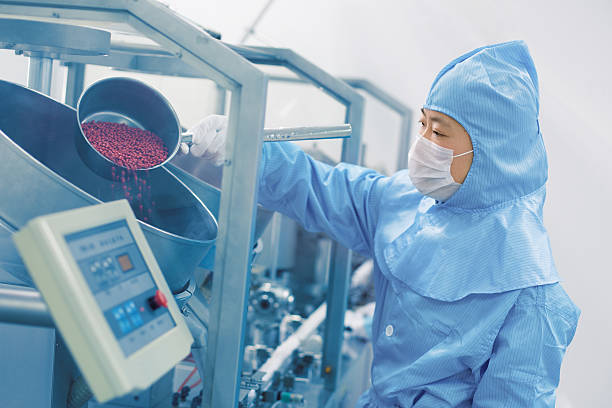Understanding ZSM-5 Catalyst Price: Factors That Influence Cost and Market Trends

As a type of Zeolite, ZSM-5 has a place in diverse industrial catalysis; especially in refining, petrochemical production, and environmental ZSM-5 is among the most valuable and versatile catalysts. There are ZSM-5 catalysts cost ranging discrepancies due to several intersecting factors like raw material prices, complexity of the ZSM-5 catalyst manufacture process, shifts in demand, and overarching global conditions. This article looks into the most influencing components of Zeolite ZSM-5 price formulation, its pricing movements, and what businesses need to think about when obtaining this invaluable catalyst.
What Makes Zeolite ZSM-5 a High-Value Catalyst
With unrivaled thermal stability, selectivity, and resistance to deactivation, Zeolite ZSM-5 is a synthetic aluminosilicate possessing an MFI (Mobil Five) structure and boasts of resilience to high temperatures. Due to these attributes, ZSM-5 is successfully harnessed for FCC, MTG, and aromatic processing. Compared to the other zeolites, ZSM-5 is the most selective for hydrocarbon isomerization and alkylation, which is essential for fuel and petrochemical refining productivity.
The production of ZSM-5 is costly, since its complex internal structure requires strict control over its hydrothermal synthesis, including temperature, pressure, and chemical components. The market value for these catalysts is higher than that for Mordenite or Zeolite Y, because of the greater ZSM-5 catalysts demand in the industrial processes. Additionally, the increasing use of renewable biofuels and emission control systems in industries affects the demand.
Even though ZSM-5 is not the most economical option, the reduced frequency of catalyst replacement makes it a feasible option. This is valid especially in comparison to other zeolites that are prone to coke formation, leading to deactivation of the entire system as ZSM-5 would allow for much greater catalytic performance over long periods of time.
Key Factors That Influence Zeolite ZSM-5 Price
As with any other product, the market value for Zeolite ZSM-5 is affected by a combination of many factors like raw material cost, production techniques, supply chain, and any necessary changes. SDAs along with Silica and alumina are the primary raw materials ZSM-5 synthesis is based on. These components may change in price causing fluctuation in ZSM-5 catalysts price.
Another primary factor influencing pricing is the intricacy involving the production of the item. The manufacturer must invest in or purchase high-end equipment and sophisticated conditions for quality control for the ZSM-5 zeolite that is offered at lower prices. Bracket ZSM-5’s price is determined by the cost incurred in the customization for hydrothermally synthesized ZSM-5’s variable purity.
Higher ZSM-5 pricing is experienced during increases in modifying the ZSM-5’s Silicon and Aluminum ratio, construction surface, or even mesoporous structure enhancing for increasing catalytic action efficiency for specific applications like biofuel refinement, selective catalytic reduction (SCR), and even methanol to olefins (MTO) conversion.
An economic factor for the Zeolite ZSM-5 pricing is the cost incurred by the supplier’s region. ZSM-5 P-9100, ZSM-5 M3027, ZSM-5 M31182 are located in regions of China, the Intra-COST Zone Macedonia, USA which incur high tariffs, cost and bordering shipment constraints ZSM-5 Z-630 and ZSM-5 Z-650 have cheaper pricing due to being situated in non tariff zones Europe. Furthermore, when a business reduces expenses through company altering of quotas on internationally imported ZSM-5, distribution profits decide pricing globally.
Market Trends and Demand for ZSM-5
The ZSM-5 catalysts market has been experiencing heightened demand, as a result of expansion in the petrochemical industries, improvement in fuel quality requirements, and the increased use of green energy technologies. One of the most important market movements is the wide application of ZSM-5 zeolite in biofuel production where it is used to upgrade hydrocarbons from biomass into transportation fuels.
In the case of the petrochemical industry, ZSM-5 is extensively used in fluid catalytic cracking (FCC) for increasing gasoline production and the yield of light olefins like propylene and butylene. The demand push for high-octane fuels and an improvement in the refining processes have spurred the need for ZSM-5 based catalysts.
Environmental regulations had an effect on the market trends for ZSM-5 catalysts. Due to more stringent policies on emissions, ZSM-5 is being used more widely by industries in selective catalytic reduction (SCR) systems for the control of nitrogen oxide (NOx) emissions. The impetus followed by the increased need for minimization of pollutants and industries emissions globally will more than sustain the requirements for ZSM-5 in environmental applications.
Moreover, novel developments like methanol-to-gasoline (MTG) and methanol-to-olefins (MTO) processes are creating new opportunities for ZSM-5 use in industries as well as in new markets that a shifting away from crude oil and aiming to synthesize useful chemicals from alternate raw materials. These trends are expected to increase the value of Zeolite ZSM-5 in the market.
Another factor that affects the pricing is the local availability of the required raw materials and the production capacity of the region. China and Asia have become one of the largest producers of ZSM-5 since they can easily divide labor and have access to mass production. Europe and North America on the other hand have to pay a premium since they lack these luxuries due to limited regulations and more stringent production processes. These regional differences influence the pricing structures, resulting in the need for strategic pricing in order to make up for the economic burden.
How to Optimize Costs When Sourcing Zeolite ZSM-5
For businesses aiming to acquire Zeolite ZSM-5, spending and resource allocation is a key consideration. Finding reputable ZSM-5 suppliers and manufacturers who can ensure reliability and performance while offering bulk volumes at affordable pricing often provides the most cost-effective solution. Decreased catalyst replacement reduces operational costs, making the investment better in the long run.
Cost management is often done with the use of bulk buying, since many suppliers provide cheaper rates when large orders are made. Industries that rely on continuous supply of ZSM-5 can purchase long-term contracts in order to stabilize their pricing and mitigate market risks. Furthermore, choosing the specific ZSM-5 formulations with the appropriate Si/Al ratios and pore size suited for different uses enhances effectiveness while decreasing the amount of catalysts needed for optimal results.
Regenerated ZSM-5 catalysts tend to be a better option for companies that worry about the costs and environmental sustainability. Certain suppliers provide recycling and regeneration options subsidizing the cost of buying new catalysts. These Solutions are more frequently adopted by companies trying to achieve environmental and economic targets.
Another way to optimize costs would be using more than one supplier. Having more than one supplier creates an opportunity for businesses to avoid price surges and maintain constant purchasing ability. Besides, paying attention to some of the newer industry movements and innovations in catalyst regeneration will provide new ways to cut expenses.
Conclusion
The cost of Zeolite ZSM-5 is affected by multiple factors such as the cost of raw materials, production processes, demand in the region, and other specifics of the region. The continuing dependence of the industries on ZSM-5 for reining, petrochemical processing, and environmental ventures assures the demand for this high-performance catalyst will not die out.
Awareness of the market components and prevailing trends allows ZSM-5 suppliers to make rational decisions. Economically catalytic processes like Fluid Catalytic Cracking, biofuel upgrading, and emission controls all enhance the impact of ZSM-5 and enhance the zealite’s worth. By choosing the appropriate supplier, industries can take advantage of bulk purchases, while employing sustainable regeneration techniques to create the most value out of their ZSM-5 expenditures, all while remaining competitive in rapidly changing markets.
Detection of new ZSM-5 applications requires firms to stay ahead of the curve in terms of technology and regulations that may influence the zeolite’s cost. Effective strategies for procuring and spending money are vital to ensure that maximum output is derived from the ZSM-5 catalysts while remaining cost effective.

